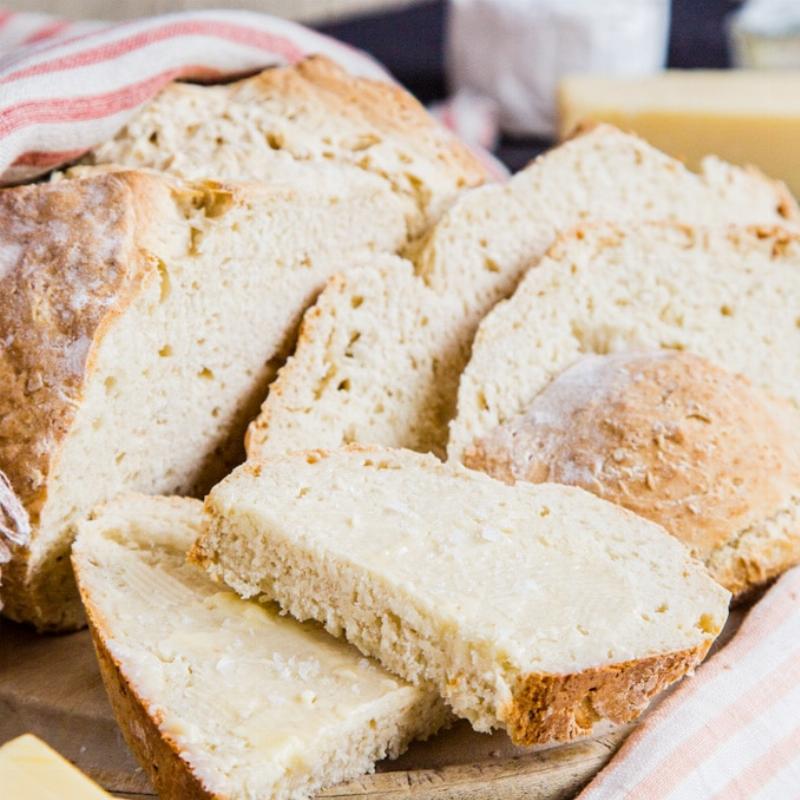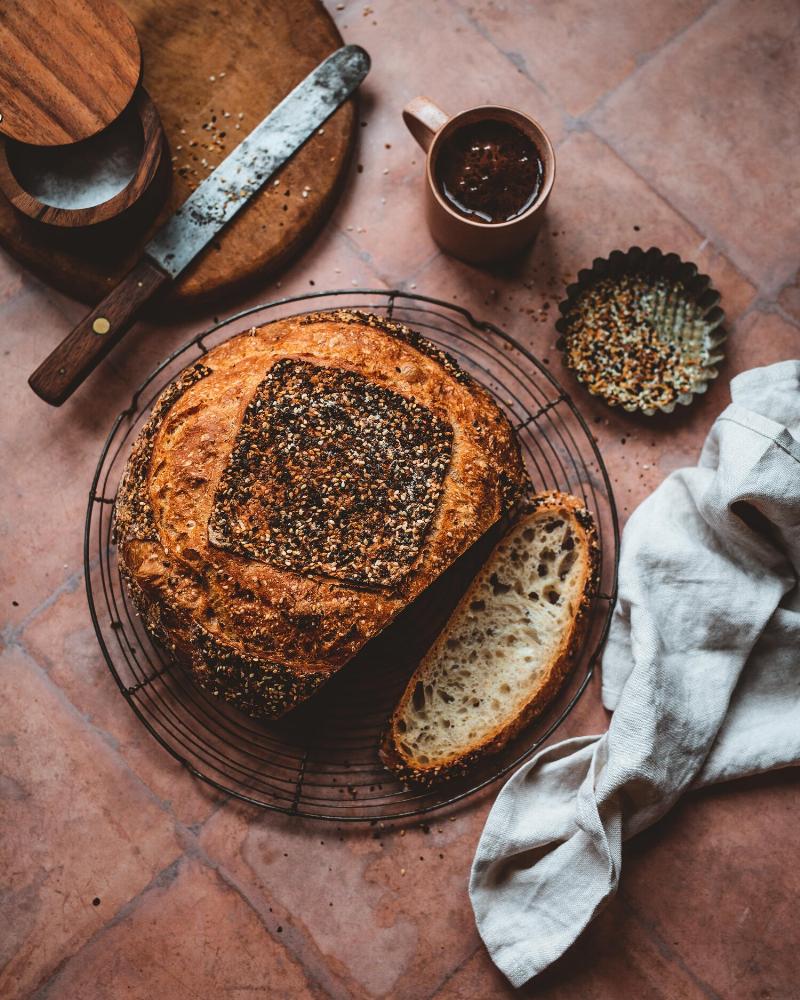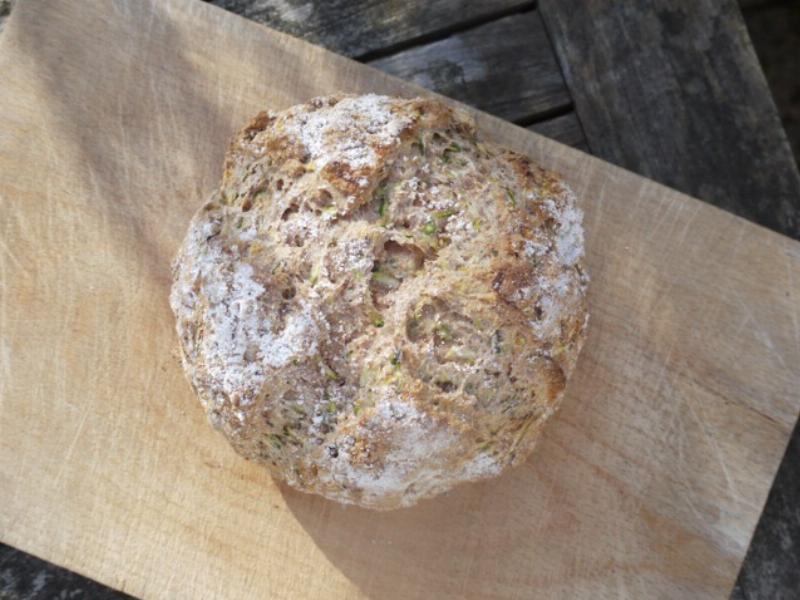Making delicious homemade bread doesn’t have to be an all-day affair. With a Fast Bread Recipe With Yeast, you can enjoy the aroma and flavor of freshly baked bread in just a fraction of the time. This guide will explore the secrets to quick and easy bread making, offering simple steps and helpful tips to elevate your baking game. We’ll cover everything from choosing the right ingredients to kneading techniques and baking tips, ensuring your fast bread comes out perfectly every time.
Table Of Contents
- Understanding Yeast and Its Role in Fast Bread
- Choosing the Right Flour for Fast Bread Recipes
- Mastering the Quick Kneading Technique
- Quick Rise Methods for Fast Bread
- Baking Tips for Perfect Fast Bread
- Variations and Flavor Enhancements
- Troubleshooting Common Fast Bread Issues
- Making Fast Bread Even Faster: The No-Knead Method
- Conclusion: Enjoy Fresh, Homemade Bread in a Flash
- FAQ: Your Fast Bread Questions Answered
Understanding Yeast and Its Role in Fast Bread
Yeast is the magic ingredient that gives bread its airy texture and characteristic flavor. This single-celled organism feeds on sugars, producing carbon dioxide gas that creates bubbles in the dough, causing it to rise. For fast bread recipes, we leverage the power of active dry yeast, which is readily available and easy to use. The key to a fast rise is providing the yeast with optimal conditions: warm water (around 105-115°F), a touch of sugar, and a bit of time to activate before mixing it with the other ingredients. This “proofing” process ensures the yeast is alive and kicking, ready to leaven your dough quickly.
Choosing the Right Flour for Fast Bread Recipes
While all-purpose flour works well for most fast bread recipes, using bread flour can result in a loftier and chewier crumb. Bread flour has a higher protein content, which helps develop gluten – the protein network that gives bread its structure. If you’re looking for a lighter texture, you can also experiment with adding a small amount of whole wheat flour or rye flour to your dough. Just remember, different flours absorb water differently, so you may need to adjust the amount of liquid accordingly.
 Ingredients for a fast yeast bread recipe
Ingredients for a fast yeast bread recipe
Mastering the Quick Kneading Technique
Kneading is an essential step in bread making, helping to develop the gluten and create a smooth, elastic dough. However, for fast bread, we don’t need the lengthy kneading times required for traditional bread recipes. A quick kneading method, typically 5-7 minutes, is sufficient to develop the gluten enough for a good rise. You’ll know the dough is ready when it’s smooth, slightly tacky, and springs back when gently poked. For an even faster approach, you can even skip traditional kneading altogether and opt for the no-knead method. This involves a longer fermentation period, allowing the gluten to develop naturally without any manual kneading. If you’re aiming for a truly speedy baking process, check out our Simple French bread in 1 hour.
Quick Rise Methods for Fast Bread
The rising time is often the most time-consuming part of bread making. However, there are several ways to speed up the process. A warm environment is crucial for yeast activity. You can create a warm, draft-free spot by preheating your oven to the lowest setting, then turning it off and placing the dough inside to rise. Alternatively, you can place the dough in a bowl covered with plastic wrap or a damp kitchen towel near a warm spot in your kitchen. Another technique is to use a slightly higher amount of yeast than usual, which will help the dough rise more quickly. This method works particularly well for recipes like our Fast white bread recipe.
Baking Tips for Perfect Fast Bread
Once the dough has doubled in size, it’s ready to be baked. Preheat your oven to the temperature specified in the recipe. The baking time will vary depending on the size and shape of your loaf. A good indicator of doneness is a golden brown crust and a hollow sound when you tap the bottom of the loaf. Allow the bread to cool completely on a wire rack before slicing and serving. This prevents the inside from becoming gummy.
 Kneading dough for fast yeast bread
Kneading dough for fast yeast bread
Variations and Flavor Enhancements
Once you’ve mastered the basic fast bread recipe with yeast, you can explore countless variations. Add herbs, spices, cheese, or nuts to the dough for added flavor and texture. You can also experiment with different shaping techniques, such as rolls, braids, or even a simple boule. For those looking for a sweet treat, try our Quick cinnamon bread no yeast.
Troubleshooting Common Fast Bread Issues
Sometimes, despite our best efforts, things can go wrong. If your fast bread isn’t rising properly, it could be due to inactive yeast, too cold or too hot water, or not enough kneading. If the bread is dense and heavy, it could be due to over-kneading or not enough rising time. Don’t be discouraged; baking is a learning process.
 A loaf of freshly baked fast yeast bread
A loaf of freshly baked fast yeast bread
“Understanding the fundamentals of yeast activity is key to creating a successful fast bread recipe,” says renowned baker, Amelia Hearthstone. “Providing the yeast with the right environment and nutrients allows for a quick and efficient rise, resulting in a delicious loaf in record time.”
Making Fast Bread Even Faster: The No-Knead Method
For the ultimate in convenience, consider a no-knead fast bread recipe. This method eliminates the kneading step entirely, relying on a long, slow fermentation to develop the gluten. While the overall time commitment is slightly longer due to the extended rise, the active hands-on time is significantly reduced. This is a great option for busy bakers who want fresh, homemade bread without the fuss. You can explore the no-knead approach with our Quick sourdough bread no starter.
“The beauty of the no-knead method lies in its simplicity,” adds Ms. Hearthstone. “It allows even novice bakers to achieve impressive results with minimal effort.”
Conclusion: Enjoy Fresh, Homemade Bread in a Flash
With a fast bread recipe with yeast, you can have warm, fragrant bread on your table sooner than you think. By understanding the fundamentals of yeast, kneading techniques, and rising methods, you can achieve bakery-worthy results in your own kitchen. So, embrace the simplicity of fast bread making and enjoy the satisfaction of creating something truly delicious. Start baking your own fast bread today!
FAQ: Your Fast Bread Questions Answered
-
Can I use instant yeast instead of active dry yeast? Yes, you can typically use instant yeast as a direct substitute for active dry yeast in fast bread recipes.
-
What is the ideal water temperature for activating yeast? The optimal water temperature for activating yeast is between 105-115°F. Water that’s too hot can kill the yeast, while water that’s too cold can hinder its activity.
-
How can I tell if my dough has risen enough? The dough should have doubled in size. Gently poke the dough with your finger; if the indentation slowly springs back, it’s ready.
-
Can I bake fast bread in a bread machine? Yes, many bread machines have settings specifically designed for fast bread recipes.
-
What should I do if my fast bread is too dense? The dough may have been over-kneaded or not given enough time to rise. Try reducing the kneading time or increasing the rising time in your next attempt.
-
How do I store leftover fast bread? Store leftover fast bread in an airtight container at room temperature for up to 3 days or freeze it for longer storage.
-
Can I add other ingredients to my fast bread dough? Absolutely! Get creative and add herbs, spices, cheese, nuts, or other ingredients to enhance the flavor and texture of your bread. Consider our Quick cornbread with cheese for inspiration.

Pingback: Simple Cinnamon Bread Recipe: A Warm Slice of Comfort - Bestbaking Recipes